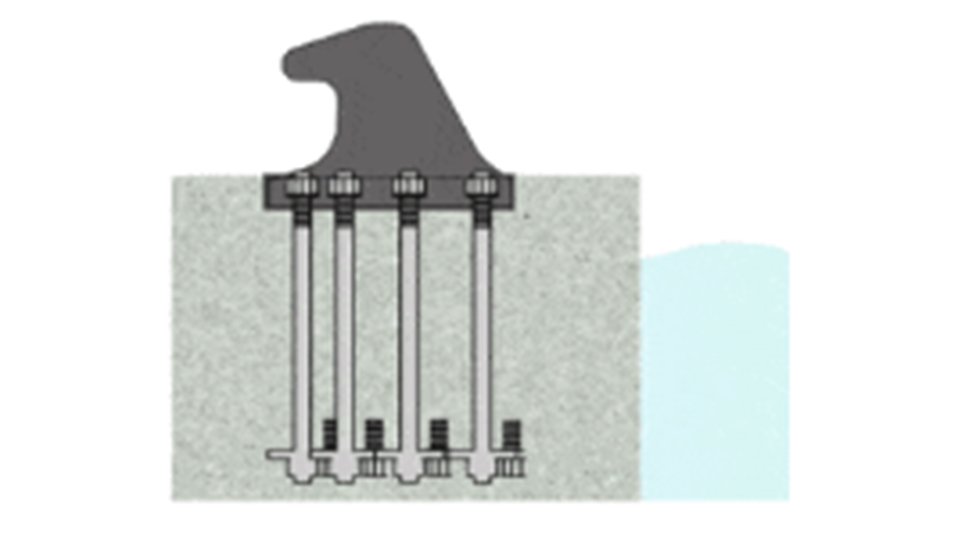Mooring Bollards: The Importance, Design, and Safety Considerations in the Maritime Industry

In the vast and dynamic maritime industry, ensuring the safety and stability of vessels during docking and mooring operations is of paramount importance. Mooring bollards, often overlooked, play a crucial role in securing ships to docks, wharfs, or quays. These robust, fixed structures are essential components of maritime infrastructure, providing a secure point for mooring lines to anchor vessels. This article explores the importance, design, installation, maintenance, and safety considerations of mooring bollards in the maritime industry.
Importance of Mooring Bollards
Mooring bollards are indispensable in maritime operations for several reasons:
Secure Berthing: Mooring bollards provide a reliable attachment point for ships' mooring lines, ensuring that vessels remain stationary during docking. This is particularly critical in areas with strong currents, winds, or tidal forces,where the risk of a ship drifting away is high.
Safety Enhancement: Properly secured vessels reduce the risk of accidents, collisions, and groundings, there by enhancing overall safety in ports and harbors. Mooring bollards also facilitate smooth and efficient mooring and unmooring processes, minimizing the potential for human error.
Operational Efficiency: Efficient mooring enables swift loading and unloading of cargo, as well as streamlined embarkation and disembarkation of passengers. This efficiency is crucial for maintaining port traffic flow and ensuring timely operations.
Load Distribution: Mooring bollards distribute the forces exerted by a ship's movements evenly, reducing stress on both the vessel and the dock structure. This helps prevent damage to infrastructure and prolongs the lifespan of mooring equipment.
Design, Installation, and Maintenance of Mooring Bollards
The effectiveness of mooring bollards depends on their design, installation, and maintenance.
Here are key considerations:
Design: Mooring bollards are engineered to withstand harsh marine environments and significant forces. They are typically made from durable materials such as cast iron, steel, or composite materials. The design includes a sturdy base, a solid shaft, and a head with features like grooves or horns to facilitate the secure wrapping of mooring lines.
Here are some of the most commonly used types of mooring bollards:
Single Bitt Bollard
Double Bitt Bollard
T-Head Bollard
Kidney Bollard
Cruciform Bollard
Installation: Proper installation is crucial for the bollard's effectiveness. The base must be securely anchored to the dock or quay to provide stability and resistance against lateral and vertical forces. The positioning of bollards should also consider the vessel's size and the specific requirements of the docking area.
Maintenance: Regular inspection and maintenance are essential to ensure the bollards' continued effectiveness. This includes checking for signs of wear, corrosion, or structural damage. Timely repairs or replacements are necessary to prevent accidents and ensure the bollards remain capable of withstanding the forces they are designed to resist.
Safety Considerations
Safety is a primary concern in the design and use of mooring bollards. The following considerations are critical:
Load Capacity: Mooring bollards must be designed to handle the maximum expected load based on the vessel's size and the environmental conditions. Overloading can lead to structural failure and accidents.
Material Selection: Choosing corrosion-resistant materials is essential for durability and longevity in harsh marine environments. High-performance alloys and advanced coatings can enhance resistance to saltwater and other corrosive elements.
Regulatory Compliance: Mooring bollards must comply with international maritime regulations, such as those set by the International Maritime Organization (IMO), which mandate specific design standards and inspection requirements.
Training and Awareness: Port workers and ship crews must be trained in the proper use and inspection of mooring bollards. Understanding the equipment's limitations and recognizing potential hazards are crucial for maintaining safety.
Conclusion:
Mooring bollards are unsung heroes in the maritime industry, ensuring the safe and efficient berthing of vessels. Their importance in securing ships, enhancing safety, and facilitating operations cannot be overstated. Proper design, installation, maintenance, and adherence to safety considerations are essential for maximizing the effectiveness and reliability of mooring bollards. By understanding and implementing these principles, maritime stakeholders can contribute to safer and more efficient port operations.


